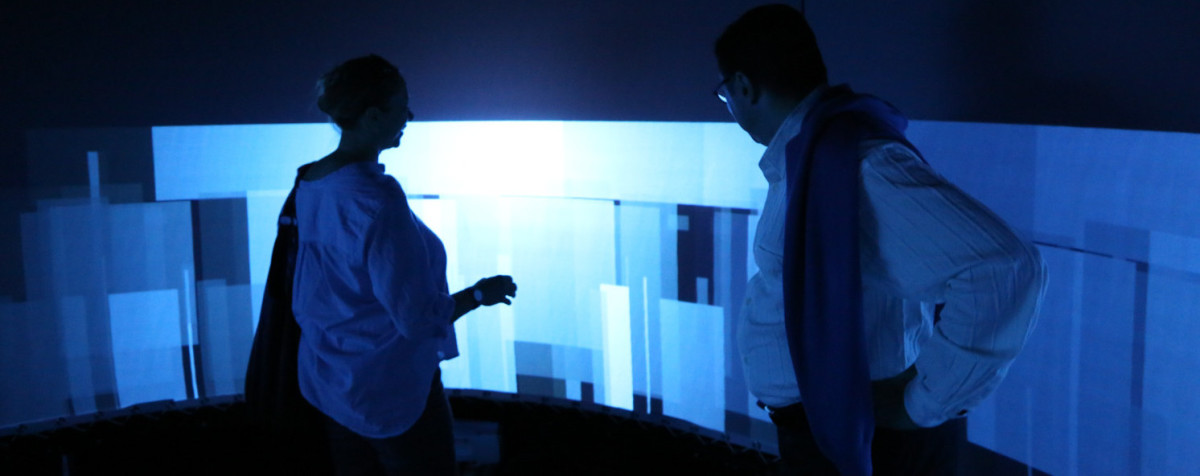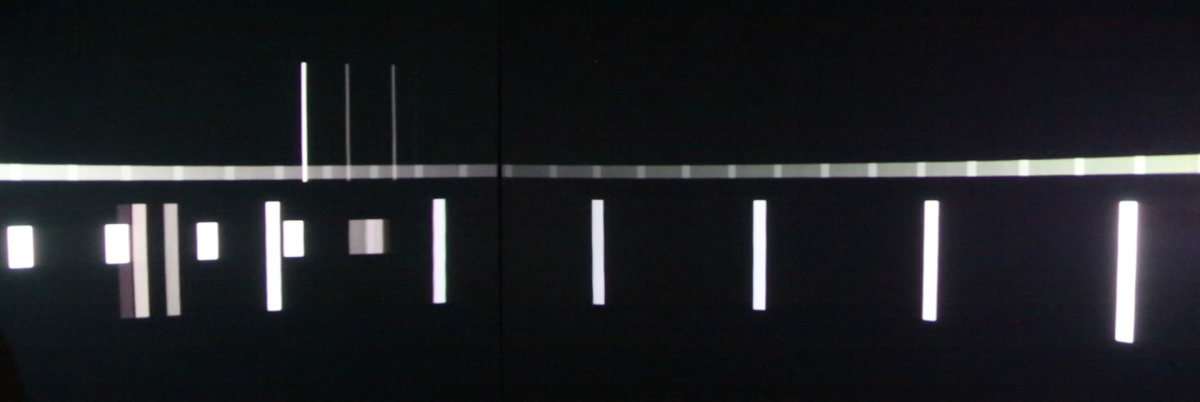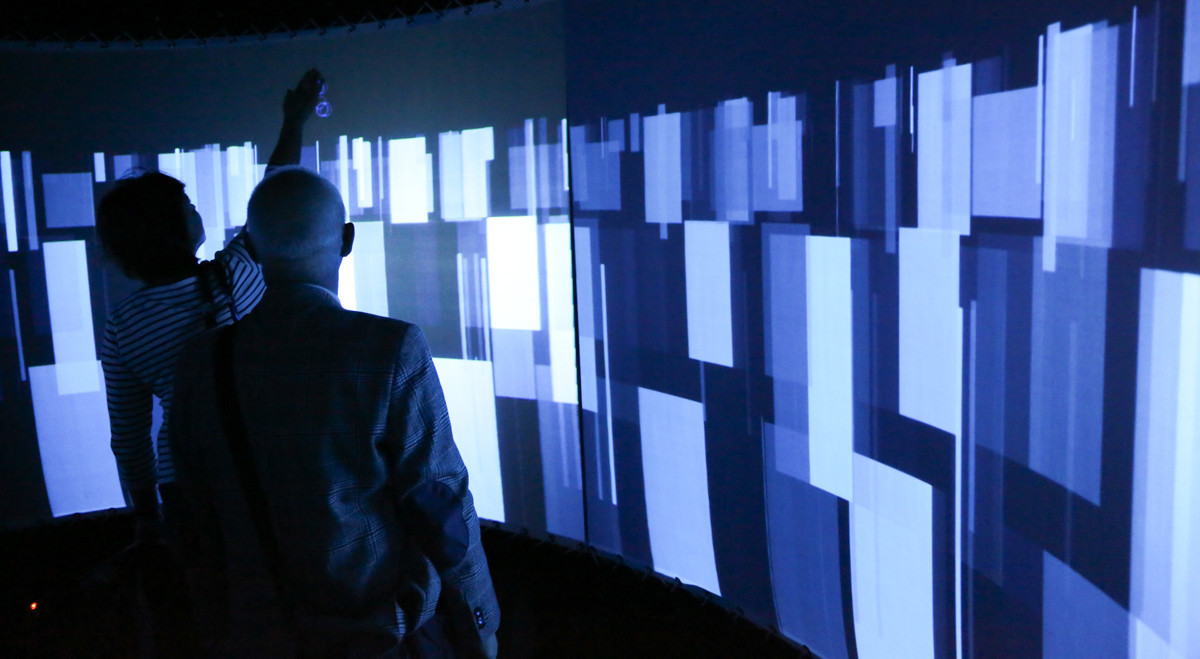Jan Schacher (2013 – 2015)
In this piece, the circular space is seen as a cyclical movement space that is filled with acoustic and visual pulse-trains of differing intervals and life spans, which are triggered by the user’s touch. The combination and interaction by several users generates a complex web of overlaid visual and acoustical ‘voices’, which potentially merge in perception into groups or masses. Visually the delineation of time is emphasized with persistence of the impulses as marks that slowly fade, like memory, and depending on the density of the active voices, create a textured layered space.
The main motivation for this piece is a curiosity about perception of temporal, spatial and sonic densities. The piece serves as an investigation into how our perception is capable of separating visual and acoustic streams and how sensory overloading has the effect of forming groups or combined objects or gestalts that exist in perception. The spatial specificity of the cylindrical space provides the ideal frame to encircle the viewer and listener. Another topic of interest is the social interaction by several visitors, in particular in relation to such a reduced sonic and graphical space. The stark or abstract quality poses a challenge to perception and potentially generates a resonating experience.
The title refers to two concepts. The first comes from Ligeti’s polyrhythmic grids evolving into organical phrases and harmonic ‘gestalts’ that he explored in a piece entitled “Clocks and Clouds”‘ from 1972-73 for chamber orchestra and women’s chorus. He said: “I liked Popper’s title and it awakened in me musical associations of a kind of form in which rhythmically and harmonically precise shapes gradually change into diffuse sound textures and vice-versa, whereby then, the musical happening consists primarily of processes of the dissolution of the ‘clocks’ to ‘clouds’ and the condensation and materialization of ‘clouds’ to ‘clocks’.” Time and memory are central aspects inspiring the piece: “I should like to refer to the soft, limp watches of Dali’s painting (The Persistence of Memory, 1931), which had associative value in the composition of this piece…” [1]
Ligeti pulled the title from Karl Popper’s notion: “all clouds are clocks, even the most cloudy of clouds.” Popper’s metaphor describes the two ends of the spectrum of predictability in (social) science: Clouds represent the disorderly and irregular, and clocks represent the predictable and rational. [2]
The second concept is based on Deleuze and Guattari’s “smooth space and the striated space” (l’espace lisse et l’espace strié): “In the simplest terms … in a smooth space-time one occupies without counting, whereas in a striated space one counts in order to occupy … make palpable or perceptible the difference between non-metric and metric multiplicities, directional and dimensional spaces.” [3] p. 476 But “the two spaces in fact exist only in mixture: smooth space is constantly being translated, traversed into a striated space; striated space is constantly being reversed, returned to a smooth space.” [3] p. 474 “a striated space … is necessarily delimited, closed at least one side [, it ] implies a closed space (circular or cylindrical figures are themselves closed).” A smooth space, on the other hand as “an aggregate of intrication of this kind is in no way homogeneous: it is nevertheless smooth, and contrasts point by point with the space of fabric.” [3] p. 475
[1] quote from program notes at LA philharmonic website
[2] K. R. Popper. Of clouds and clocks: an approach to the problem of rationality and the freedom of man. Thinking Clearly about Psychology: Essays on Matters of Public Interest, 1:100, 1991.
[3] G. Deleuze and F. Guattari. A Thousand Plateaus. The Athlone Press, London, 1988.





